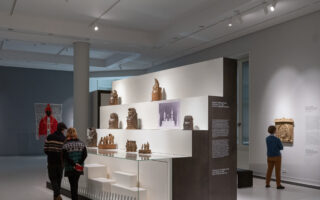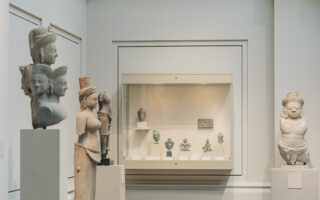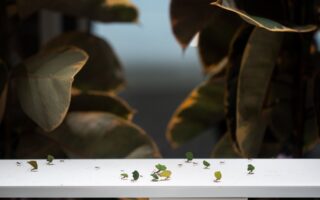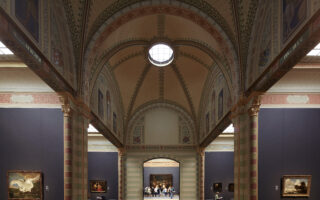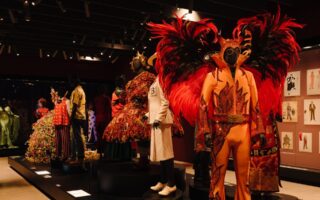Museum curators evaluate AI threat by giving it the reins
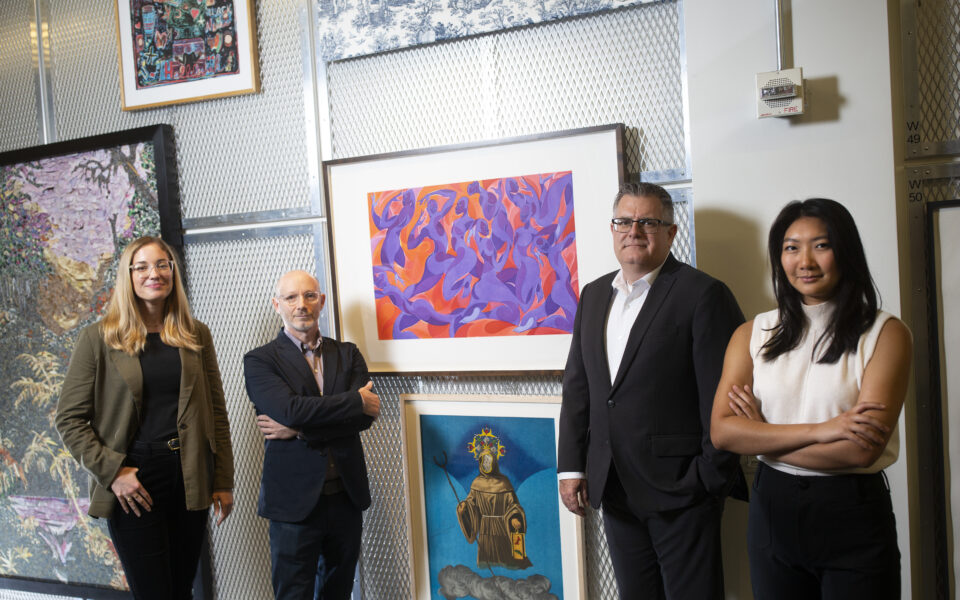
Marshall Price was joking when he told employees at Duke University’s Nasher Museum of Art that artificial intelligence could organize their next exhibition. As its chief curator, he was short-staffed and facing a surprise gap in his fall programming schedule; the comment was supposed to cut the tension of a difficult meeting.
But members of his curatorial staff, who organize the museum’s exhibitions, embraced the challenge to see if AI could replace them effectively. Professions of all kinds — military pilots, comedians, firefighters, advertisers — are confronting how artificial intelligence will change long-standing responsibilities, as well as assumptions they have about the technology.
“We naively thought it would be as easy as plugging in a couple prompts,” Price recalled, explaining why curators at the North Carolina university have spent the past six months teaching ChatGPT how to do their jobs.
The experiment’s results will be unveiled Saturday when Nasher opens the exhibition “Act as if You Are a Curator,” which runs on campus through the middle of January. It is one of the first examples of AI organizing an art exhibition, at a time when the museum industry is redefining its relationship with technology.
Whether the exhibition is considered a curatorial success depends on one’s vantage point. ChatGPT, a prominent chatbot developed by the company OpenAI, was able to identify themes and develop a checklist of 21 artworks owned by the museum, along with directions of where to place them in the galleries. But the tool lacked the nuanced expertise of its human colleagues, producing a small show with questionable inclusions, mistitled objects and errant informational texts.
Museum employees and researchers at Duke are debating whether the show is comparable to others or simply considered “good enough” for a computer. When asked if the ChatGPT experiment resulted in a good exhibition, Price paused before laughing.
“I would say it’s an eclectic show,” he said. “Visually speaking it will be quite disjointed, even if it’s thematically cohesive.”
The process began with Mark Olson, a professor of visual studies at Duke, who worked through the technical challenges of fine-tuning ChatGPT to process the museum’s collection of nearly 14,000 objects. A curatorial assistant, Julianne Miao, explored the possibilities of that system in some of the first “conversations” with the chatbot.
“Act as if you are a curator,” Miao instructed. “Using your data set, select works of art related to the themes of dystopia, utopia, dreams and subconscious.”
Those specific themes came after an earlier conversation in which the machine generated ideas for exhibitions about social justice and environmentalism. But its most prevalent responses were on topics such as the subconscious, and the human curators directed ChatGPT to continue developing those ideas. The AI named its project “Dreams of Tomorrow: Utopian and Dystopian Visions.”
The process was not altogether different from a typical curatorial brainstorming session, but the chatbot could search through the entire collection within a few seconds and surface artworks that humans might have overlooked.
“The algorithm was adamant that we included several Dalí lithographs on the mysteries of sleep,” explained Julia McHugh, a curator and the museum’s director of academic initiatives.
Those seemed like a reasonable choice since Salvador Dalí is associated with surrealism and the artistic interpretation of dreams. But it was unclear why ChatGPT was pulling other objects into the exhibition, including two stone figures and a ceramic vase from Mesoamerican traditions. The curator said the vase was in particularly bad condition and not something she would typically put on display.
ChatGPT, McHugh said, might have picked up information from keywords included in the digital records for those objects, describing them as accompaniments in the afterlife. However, it also incorrectly titled the stone figures as “Utopia” and “Dystopia” and named the Mayan vase “Consciousness,” which made all three perfect candidates for the exhibition.
The mistakes demonstrated clear drawbacks of automating the curatorial process. “It made me think really carefully about how we use keywords and describe artworks,” McHugh said. “We need to be mindful about bias and outdated systems of cataloging.”
Chatbots like ChatGPT — driven by AI technology that guesses the next word in a sequence based on an immense reservoir of human-created data — are a long way from handling the complex tasks of managing loans from other institutions, scouring archives for primary sources and checking facts. Efforts to automate curation are still in their infancy, a thought experiment for human curators to reconsider their approaches from a machine’s perspective.
Last year’s Bucharest Biennale in Romania was organized by Jarvis, an AI program that selected a dozen artists after assigning “score values” based on their popularity and how they fit into the exhibition’s core theme of popular culture. A year earlier, the Whitney Museum and the Liverpool Biennial commissioned a project called “The Next Biennial Should Be Curated by a Machine,” which used a tool developed by OpenAI to generate fictitious artist biographies and absurd curatorial statements — a satire of the clichéd artspeak plaguing real biennials.
“You really get a portrait of the art world,” said Christiane Paul, a Whitney curator behind the project. The tool, she said, quickly identified rote patterns in exhibition texts at odds with curatorial goals to show the real diversity of the global arts scene.
Roderick Schrock, director of Eyebeam, a nonprofit center for art and technology, is intrigued by AI curation but said his own experiments have ended with simplistic results. He has warned his digital art curation students at the School of Visual Arts in New York against using chatbots just to “blind people with science.”
For the Nasher exhibition, ChatGPT generated descriptions for the artworks it selected as well as an adequate introductory text of about 230 words.
“From paintings to drawings, from the 19th century to contemporary times, this exhibition showcases the power of art to evoke different emotions and interpretations,” the AI wrote. “One of the highlights of the exhibition is an untitled abstract painting by Dorothy Dehner from 1962. The painting’s vibrant colors and bold brushstrokes invite the viewer to enter a world of pure imagination.”
But many of the chatbot’s descriptions were plagued by bromidic taglines such as “experience the art” and “immerse yourself.” Human curators added their own commentary on the labels to point out its quirks and inaccuracies.
Despite the errors, some Nasher curators said it was easy to see how AI could support them. “It was a new lens through which we could see and understand our collections,” said Price, the chief curator.
The speed at which ChatGPT could draft an exhibition and even suggest mood lighting for the galleries would help them brainstorm, Price said. And even some of its mistakes were instructive, if they reflected human errors in the museum’s online catalog that would need correcting.
Other members of the exhibition team were more concerned.
“I worry not so much that ChatGPT can do the job as curator,” said Olson, the visual studies expert, “but in the context of dwindling resources for the arts, it will be seen as good enough.”
Good enough — and cheap. The Nasher Museum said that developing its version of ChatGPT cost just $10.71 in technology expenses. At that price, it was easier to forgive the machine’s mistakes, so long as there was a human curator somewhere to correct them.
For the time being, most large institutions are not pursuing exhibitions curated by artificial intelligence. “Alas, no curabot projects at MoMA, yet!” said Paola Antonelli, the museum’s senior curator for the department of architecture and design. But they are watching to see how experiments at smaller museums such as Nasher go.
“The issue you run into from the start is creating an echo chamber,” Paul, the Whitney curator, said about the concept of automated curating. “This is not going to suggest anything revolutionary because it’s just drawing on what is out there. And the lowest common denominator is what’s out there.”
This article originally appeared in The New York Times.

